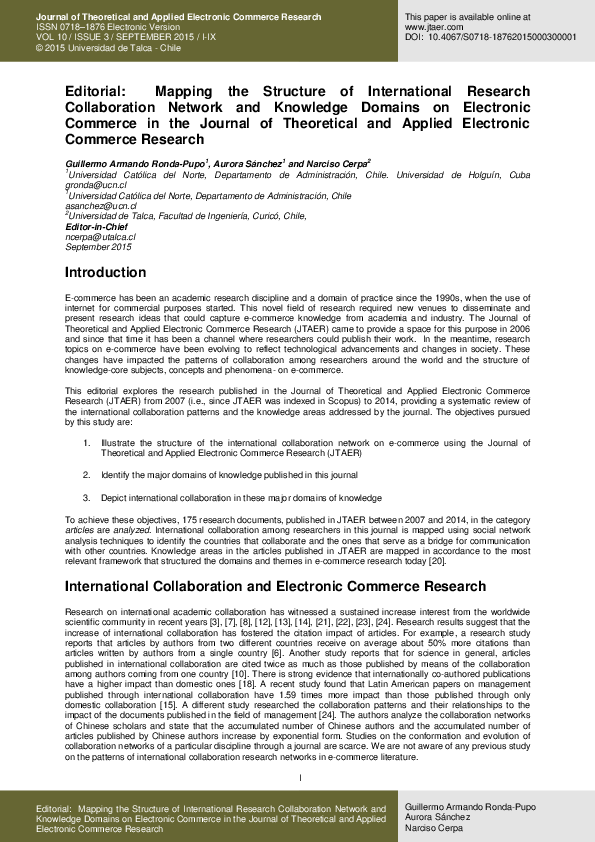Online Review Helpfulness and Information Overload: The Roles of Text, Image, and Video Elements
IF 5.1
3区 管理学
Q1 BUSINESS
Journal of Theoretical and Applied Electronic Commerce Research
Pub Date : 2024-05-29
DOI:10.3390/jtaer19020064
引用次数: 0
Abstract
Online reviews have become an important source of information for consumers, significantly influencing their purchasing decisions. However, the abundance and variety of review formats, especially the mix of text, image, and video elements, can lead to information overload and hinder effective decision-making. This study investigates how different review formats and their combinations affect the perceived helpfulness of reviews. We develop a comprehensive framework to analyze the interactions between text, image, and video elements and their impact on the helpfulness of reviews. We collect and code 8693 online reviews from JingDong Mall Mallacross six product categories, including both experience products and search products, and use multiple regression analysis to test our hypotheses. Our results show that textual review elements significantly increase review helpfulness. However, their effectiveness decreases as the amount of information increases, indicating cognitive overload. Text reviews are more prone to contribute to information overload, while visual elements such as images and videos generally do not contribute to information overload in the coexistence of text, image, and video reviews. Imagery components have a minimal effect on review helpfulness. Video elements are relatively short, which may not be sufficient to convey useful information. We also find that the impact of review formats varies between experience products and search products, and that star ratings moderate the alignment of textual or imagery components with consumer expectations. We conclude that the hybrid of text, image, and video elements in online reviews plays a crucial role in shaping consumer decision-making and information overload. Our research contributes to the literature on online reviews and information overload while providing practical implications for online retailers, review platforms, and consumers to optimize review formats, star ratings, and product types to facilitate informed purchase decisions.在线评论的帮助性和信息过载:文字、图像和视频元素的作用
在线评论已成为消费者的重要信息来源,对他们的购买决策产生了重大影响。然而,丰富多样的评论形式,尤其是文字、图片和视频元素的组合,可能会导致信息过载,阻碍有效决策。本研究探讨了不同的评论形式及其组合如何影响人们对评论有用性的感知。我们建立了一个综合框架来分析文字、图片和视频元素之间的相互作用及其对评论有用性的影响。我们从京东商城收集并编码了8693条在线评论,涉及六大类产品,包括体验类产品和搜索类产品,并使用多元回归分析来检验我们的假设。我们的结果表明,文字评论元素能显著提高评论的有用性。然而,随着信息量的增加,它们的有效性也随之降低,这表明认知负荷过重。文字评论更容易造成信息超载,而图片和视频等视觉元素在文字、图片和视频评论并存的情况下一般不会造成信息超载。图像元素对评论有用性的影响微乎其微。视频元素相对较短,可能不足以传达有用的信息。我们还发现,评论形式对体验产品和搜索产品的影响各不相同,而星级则会调节文字或图像成分与消费者期望的一致性。我们的结论是,在线评论中文字、图像和视频元素的混合在影响消费者决策和信息过载方面起着至关重要的作用。我们的研究为有关在线评论和信息过载的文献做出了贡献,同时也为在线零售商、评论平台和消费者优化评论格式、星级和产品类型以促进知情购买决策提供了实际意义。
本文章由计算机程序翻译,如有差异,请以英文原文为准。
求助全文
约1分钟内获得全文
求助全文
来源期刊
CiteScore
9.50
自引率
3.60%
发文量
67
期刊介绍:
The Journal of Theoretical and Applied Electronic Commerce Research (JTAER) has been created to allow researchers, academicians and other professionals an agile and flexible channel of communication in which to share and debate new ideas and emerging technologies concerned with this rapidly evolving field. Business practices, social, cultural and legal concerns, personal privacy and security, communications technologies, mobile connectivity are among the important elements of electronic commerce and are becoming ever more relevant in everyday life. JTAER will assist in extending and improving the use of electronic commerce for the benefit of our society.

 求助内容:
求助内容: 应助结果提醒方式:
应助结果提醒方式:


